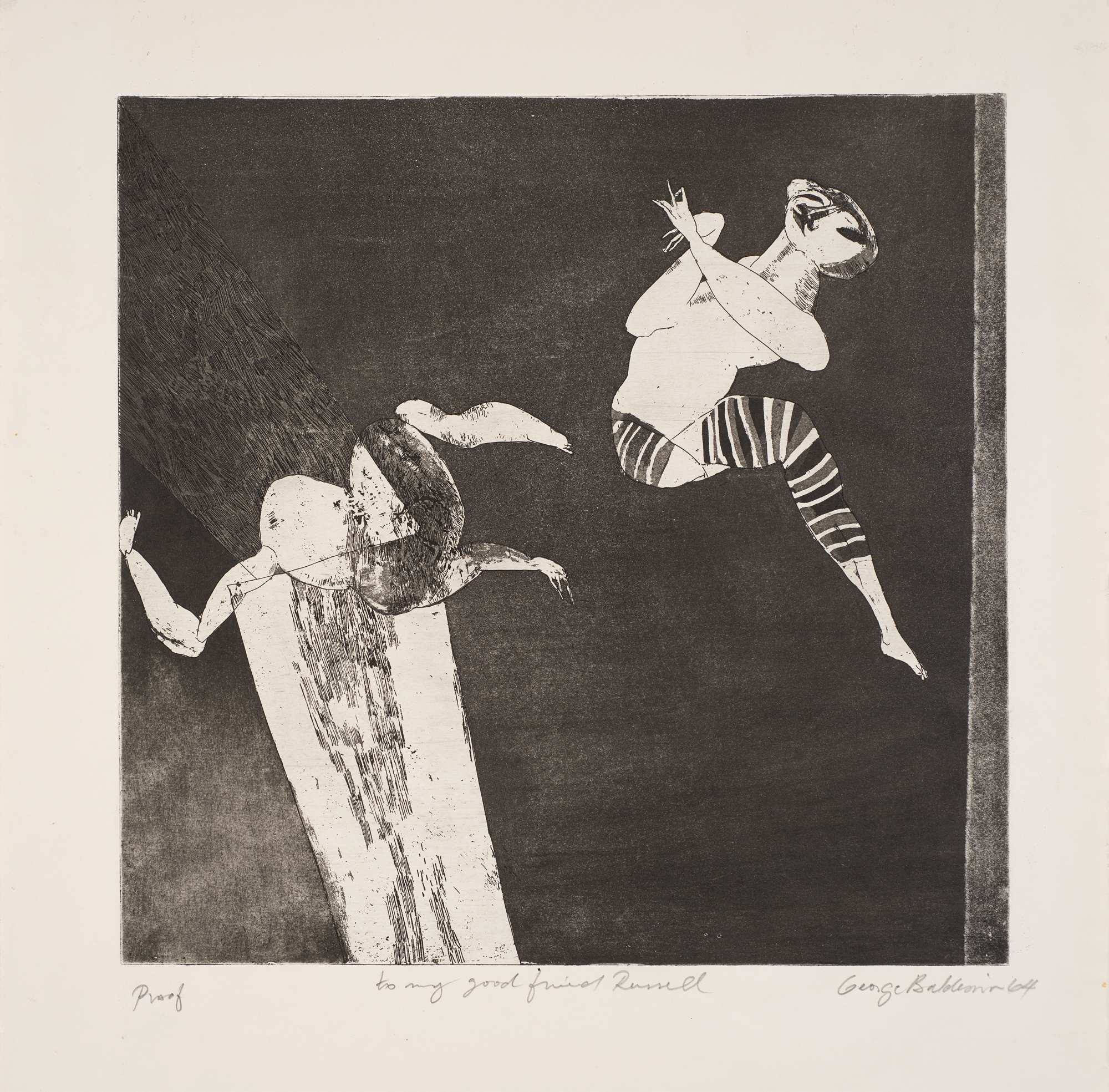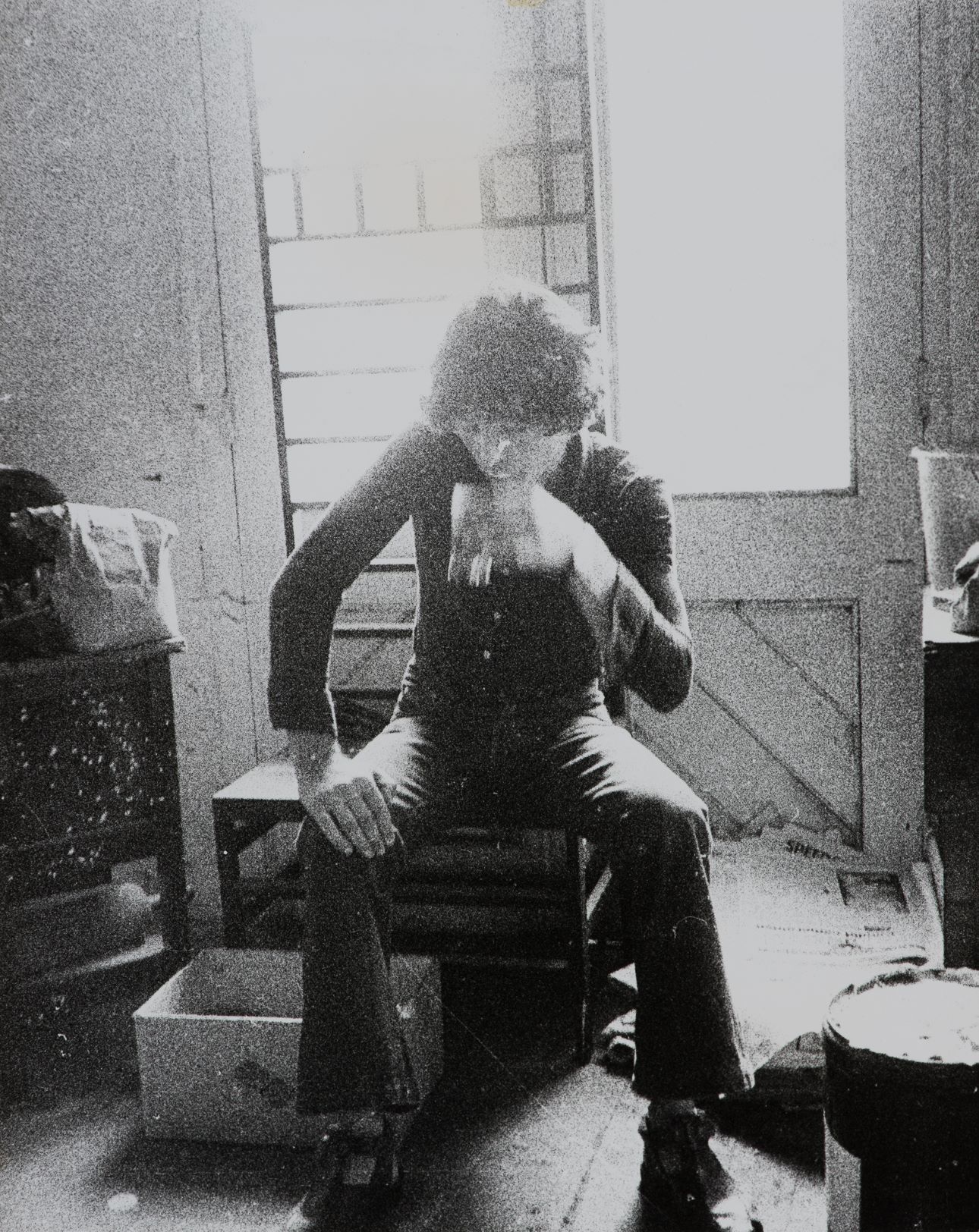Turner on Baldessin
Local curator and artist Anthony Dick Turner credits inspiration for his 2007 exhibition, European Sensibilities: George Baldessin and his Circle. Printmaking in Melbourne during the 60’s and 70’s, at the Castlemaine Art Gallery and Historical Museum (CAGHM), to his research into the work of renowned printmaker and sculptor, George Baldessin (1939–1978).

Anthony Dick Turner on George Baldessin and Melbourne Printmaking in the 60's and 70's
Many contemporary printmaking techniques as we know them, including etching, were evolved using existing machinery from the industrial revolution in the 19th Century. This machinery changed from manual use to automation, reflecting industrial needs of the time, and many of the printmaking methods that we associate with printmaking are from the manual period.
In the mid 1980’s I attended an evening etching class in South Gippsland run by Manni Redlich (1954–). The local school had an excellent etching press that the community could access. Manni had studied printmaking at Caulfield Tech (Monash University) in Melbourne and was an innovative teacher. I later studied at La Trobe in 2002, majoring in printmaking and painting as part of my BVA (Hons).
In the mid 2000’s while doing volunteer work with the Castlemaine Art Gallery and Historical Museum (CAGHM), I was undertaking research projects for Peter Perry, the then Director. During my Masters of Visual Arts research in 2007, Peter suggested I focus on George Baldessin, a very charismatic printmaker of his time. Thirty years had passed since his death and it was an excellent opportunity to focus on Baldessin's work and legacy. The 60’s and 70’s were an important time in Melbourne’s printmaking history. I decided to use Baldessin as an umbrella figure to examine some of his printmaking peers and how they collectively influenced contemporary printmaking trends during this time.
I searched the CAGHM print collection, and with the help of Evi Robinson (from Realities Gallery, Melbourne) I was able to then contact and interview many of the printmakers, some from the CAGHM collection. I collated information from around thirty artists who were directly involved. I discussed with Peter Perry the logistics of staging such a show, since it would be a big exhibition. I then asked each exhibitor to write a short recollection of the period and where possible, their memories with Baldessin.

These recollections were brought together to form the accompanying exhibition catalogue. These catalogues are all individually numbered and are now sought after as ‘collector’ items, having become an important reference research tool.
The resultant exhibition: European Sensibilities: George Baldessin and his Circle. Printmaking in Melbourne during the 60’s and 70’s was opened by Professor Grishin from the ANU, and ran from 9 June–29 July 2007.
This particular work called Acrobats was referenced in the exhibition and is a beautiful example of Baldessin’s skill as an etcher. He combines the intaglio line (etching) with aquatint, a process wherein an application of rosin (resin powder) is made, in order to cover where the acid will then etch into the surface creating a range of tonal effects on the plate surface. This method, when combined with the directly scored or scratched line on the etching plate, creates the unique art of intaglio printmaking.
Baldessin was, at the time of this work, friendly with Fred Williams (1927–1982) and it was during this period that a very important print supporter Tate Adams (1922–2018) was head of printmaking at RMIT. Adams had encouraged artists, including Baldessin, to use the printmaking facilities during weekends.
Baldessin was familiar with the London period in Williams’s graphic work from 1952–1956. I think it's fair to assume, as with Manni Redlich, that there was a natural progression of ideas in this milieu, thus making it easier to understand the visual relationship between the work Acrobat printed in 1964, and Williams’s London drawings.